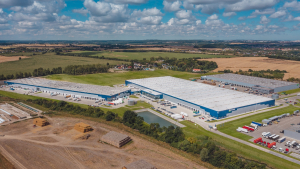“A continuation of the pattern of pay hikes well above inflation should support consumption and rents in 2019. It is that recent pattern of wage rises that should see the service sector grow within CEE economies in the coming years, sheltering the region somewhat from any blizzards appearing in the global economy,” Mark Robinson, CEE Research Specialist at Colliers International comments.

Mark Robinson
CEE Research Specialist
Colliers International
22 years of equity investment, stock broking and capital markets experience in Emerging Markets. Most significant experience (15 years) is in the stock markets of Eastern Europe. 8 years as an equity fund manager specialising in Eastern Europe. 7 years as a Head of Research/Equities. More recently specialised in global cross-asset allocation, including consideration of real estate. Detailed knowledge of macroeconomics in Eastern Europe and factors driving future growth and risks arising. Engaged presently to drive CEE Regional Research output and engage with internal and external clients. Most happy when generating original ideas and imparting my knowledge to others, thus learning via debate and interaction. More »
A global growth precipice
Several leading indicators Colliers follows suggest that a slowdown is unfolding in the world economy. Chinese growth surveys, the oil price, Chinese imports, South Korean exports, the German IFO Expectations subcomponent all point the same way: down. More worrying for CEE and Germany is the recent drop in Chinese auto demand, which presaged China‘s trade “stand-off“ with the US. Europe’s largest economy may be in a “technical recession“ right now.
Rocks to stumble over?
Colliers believes investors in real estate in the CEE-6 have to be increasingly wary of other risks in this thinner air. These include an overheating development cycle, labour shortages, progress in the ease of doing business of competitor peers around the world, Brexit and related EU funding cuts, “populist“ CEE politics and asset taxation risk. E-commerce and “flex-working“ are longer-term disrupters.
Low funding rates
The availability of cheap funding was undoubtedly a major factor in the strong performance of real estate markets in Europe and CEE in recent years. It has triggered volumes in the CEE-6 to new highs in 2018, with €13.8 billion of flow, up 5% y-o-y (Colliers International data). Yields continued their downward momentum in 2018 only in capital city office markets and via selected retail transactions.
Colliers expects, again, in 2019 that only selected locations will see further compression (capital city office, mainly). Funding rates for transactions are low but with the capital gains seen in recent years, the yield premiums have shrunk. Like many asset classes globally, CEE-6 real estate’s increased liquidity has propelled it to new highs. Premiums look most attractive in the industrial sector. Colliers prefers logistics exposure rather than manufacturing.
The consumption driver plateaus
Eurozone money supply growth has shrunk persistently since the end of 2016. This is a harbinger of slowdown in Europe. Colliers is seeing signs of this already in Western Europe. It implies that, at best, consumption sentiment and therefore growth dynamics plateau at best in the CEE-6.
Consumers climbing hard
Consumer sentiment appears to drive fund flow momentum in CEE real estate. The link to investors’ business models, with nearly half of flows in the region via the retail, logistics and hotel sectors and indirectly via employment to the office and the industrial markets, is clear. Consumer sentiment peaked in most of the CEE-6 between 6-12 months ago, before that in Romania. Applying an 18-month lead timing to that points to mid-late 2019 as the summit.
Towards a plateau, not a precipice
Is it a precipice or a plateau that lies beyond? A plateau, Colliers thinks. Research conducted 12 months ago suggested that wage growth in European countries in four-year periods leads to faster trend GDP growth in the succeeding four-year period. As most employers in the CEE region by now know, wage growth in CEE is a major feature of this economic cycle. Colliers sees a likely continuation in 2019 (5%-10% in the CEE-6), though at lower rates than last year due to the beginning of a weakening of demand in the industrial sector.
This growth is commonly faster than that seen in the EU, so even in recession phases, the region is “converging” gradually to EU levels.
Brexit…
The UK’s Brexit will most likely see cuts to the EU’s Structural Funds programme and a recalibration of eligibility of regions within the CEE-6. If local politics allows, the relatively balanced budgets of the CEE-6 countries should in general help to plug any reduction in EU Structural Funds flow. Brexit’s other likely effects include a small reduction in remittances and a shift in the migration balance of workers, which could help CEE’s labour shortages at the margin.
And disrupters
There is room for both online and traditional/omnichannel retail to keep growing in the CEE-6 out to 2022. That said, early indications of e-commerce volumes in the Czech market for 2018 are suggesting a market size perhaps higher than our top end estimate. The logistics sector stands as a hedge.





